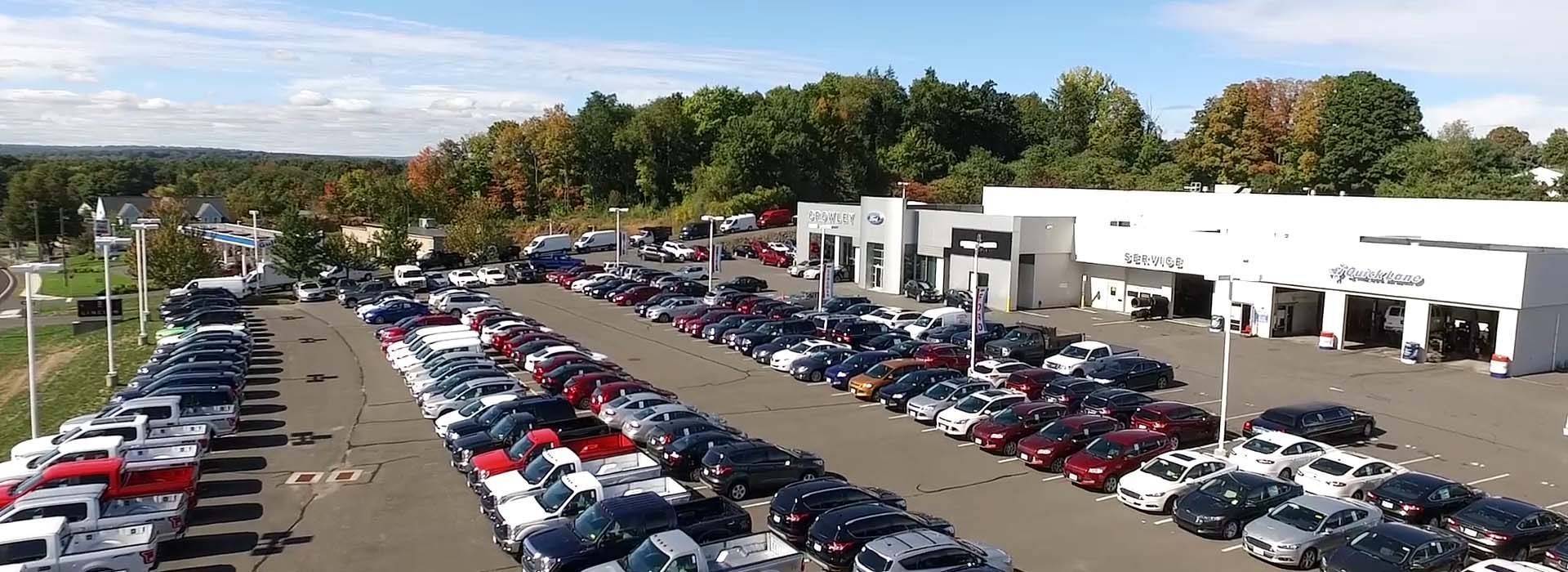Ampersand + Polk = Audiences in Overdrive for Automotive Marketers

The synergy for marketers looking to extend their reach for auto consumers is certainly here: In December 2020, Ampersand, the TV ad sales and technology platform company that is jointly owned by the three largest cable companies (Charter, Comcast and Cox), announced that it had integrated 500+ custom Polk Audiences from the Polk Automotive Solutions division of IHS Markit into its ad planning, buying and measurement tool, the AND Platform -- first launched as a managed service early last year.
The AND Platform leverages insights from nearly 40M million households and reaches 85M HH (including 60 percent of those with addressable technology) across 120 cable networks. The 500+ Polk Audiences recently added are in three categories: current ownership, loyalty, and in-market audiences, and are further subdivided for every auto brand and nameplate.
What that means for advertisers is the end of expensive scattershot marketing that reaches a lot of people who will never buy the advertised car. MediaVillage Zoomed with Marty Shelata, senior vice president for automotive partnerships at Ampersand, andJoe Kyriakoza,vice president and general manager of Polk Automotive Solutions by IHS Markit, to talk more about this new opportunity.
"We're excited to work with Ampersand, a company like ours that is thinking ahead of the curve," said Kyriakoza. "TV has gone from a linear, appointment-driven medium to one totally controlled by the consumer, who can choose to watch at different times and on different devices. Ampersand connects the dots between the different providers, and it's a win-win for everybody."
"Ampersand has developed a harmonized set of set-top box insights from our MVPD partners that measures viewership at the household level," Shelata said. "It's the largest source of deterministic viewership data available."
With that viewership data, Shelata said, "We can segment households by viewing behaviors as well as measure ad exposure. When married with a powerful data set like Polk, we can deliver relevant advertising to a target segment and then measure the actual outcome after that household was delivered the ad." In other words, the company knows the content that is being consumed, whether an ad was delivered, and provide measurement on outcomes such as dealer visitation and purchase. Auto advertisers can identify the segment of consumers with a mid-size SUV lease ending in three months and target that segment with ads extolling their new SUV lineup. The data is all aggregated and anonymized, so no one's privacy is compromised. "
"At Polk, we look at the automotive buyer universe, all of the purchases that occur and their buying history and create models that tell us what consumers are likely to buy next," said Kyriakoza. "And we can look at data going back three decades -- did they buy a car every year, or every 10 years?" If regional trends are in the data, Polk -- and its Ampersand partner -- will be able to detail them.
The automotive consumer is changing dramatically over time, with COVID having both good and bad effects. According to IHS Markit, the worst of the pandemic is now behind the industry, with sales recovery in the latter part of 2020. Consumers are worried about riding on public transit, and low fuel costs are helping to yield incremental vehicle purchases. And three million leases expired by the end of 2020. The industry is looking to meet demand with more than 100 new vehicle introductions and refreshes through 2021.
Automakers in the 1960s courted buyers with annual styling changes, while the underlying platforms were little changed. Today, models stay on the market longer, cars have more inherent longevity (200,000 miles, instead of about 75,000) and so people hold on to them for longer periods. "The average life of a vehicle is 12 years, and people keep them an average of about six years if they buy them new, seven if they bought used," said Kyriakoza. "The industry has raised quality quite a bit."
Still, today's younger buyers are motivated as much by infotainment as styling and longevity. "Tech is a major driver," said Kyriakoza. "People want to know about Bluetooth availability and navigation and features like Alexa in the vehicle. Five years ago, it didn't show up as a consideration in the data."
Similarly, some years people put fuel economy at the top of their list of concerns, and at other times -- like now -- it's way down in the list. As Americans flock to SUVs, they're also killing the market for fuel-efficient small cars. Automakers adjusted by adding SUVs to the lineup -- and changing their marketing pitches to suit. Instead of cars pulling up to the opera house, now they're seen fording streams in the back country.
And where once consumers stayed loyal to a brand for life -- you were a Ford or a Chevy buyer -- now they're less loyal, in some cases simply choosing the car with the most up-to-date technology. IHS said that some nine million consumers are ready to buy "without strong loyalty to a specific brand."
"Reaching these 'nomads' is critical to any vehicle launch," Shelata said. "As data-driven consultants, we can help automakers find the conquests, the potential buyers, and grow their businesses."
Many more changes are afoot. One is the pivot to buying online, which has been hugely accelerated by COVID. "Auto dealers are the next frontier when it comes to this type of buying," said Kyriakoza. "If you look at the Tesla site, it's very clean and easy to use. That's a step the rest of the market needs to take, investing in tools to make the whole process more seamless." Customers are still largely buying on the showroom floor, but they're doing extensive homework first, so the days of the salesman saying, "Let me show you folks the lineup" are long gone."
The ability to target ads very precisely does leave some things unchanged. "The biggest brands are still going to want to sponsor ads at the Super Bowl and the Oscars," said Kyriakoza. "They want the halo effect. They're likely to spend the same amount of money, just distribute it differently."
The message for automakers is that accurate, highly specific data will be critical for the industry going forward, both for large national advertising campaigns and much smaller spends on the dealer level.
Click the social buttons to share this story with colleagues and friends.The opinions expressed here are the author's views and do not necessarily represent the views of MediaVillage.com/MyersBizNet.


